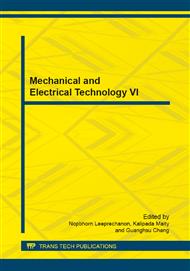p.322
p.327
p.332
p.337
p.342
p.347
p.352
p.359
p.364
Low-Complexity Multiplication Using Complement and Signed-Digit Recoding Methods
Abstract:
In this paper, a fast multiplication computing method utilizing the complement representation method and canonical recoding technique is proposed. By performing complements and canonical recoding technique, the number of partial products can be reduced. Based on these techniques, we propose algorithm provides an efficient multiplication method. On average, our proposed algorithm to reduce the number of k-bit additions from (0.25k+logk/k+2.5) to (k/6 +logk/k+2.5), where k is the bit-length of the multiplicand A and multiplier B. We can therefore efficiently speed up the overall performance of the multiplication. Moreover, if we use the new proposes to compute common-multiplicand multiplication, the computational complexity can be reduced from (0.5 k+2 logk/k+5) to (k/3+2 logk/k+5) k-bit additions.
Info:
Periodical:
Pages:
342-346
Citation:
Online since:
August 2014
Authors:
Price:
Сopyright:
© 2014 Trans Tech Publications Ltd. All Rights Reserved
Share:
Citation:


